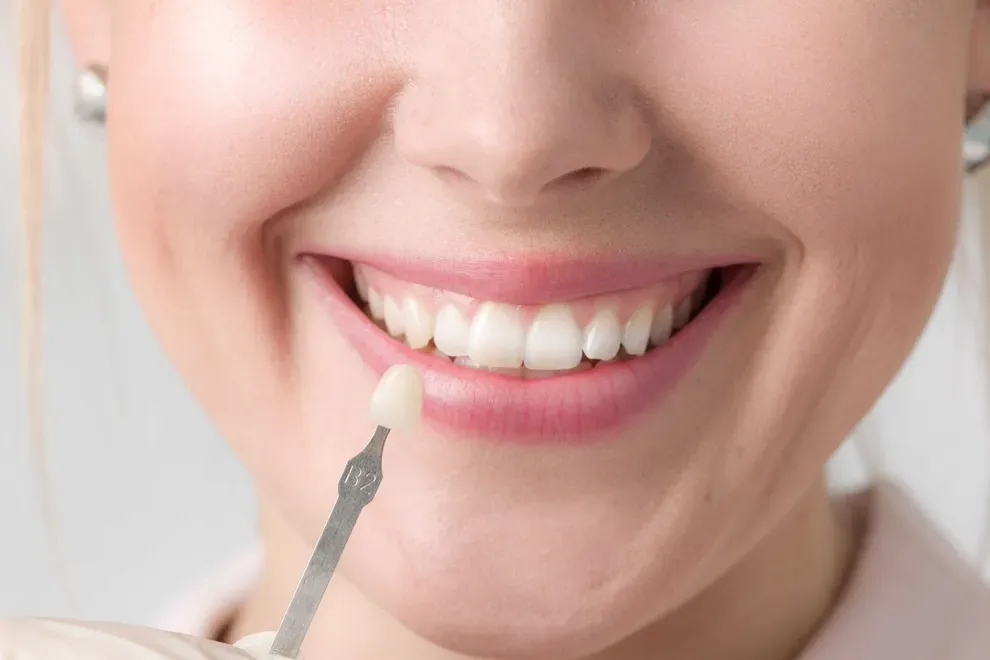History of Veneers – How They Have Changed Overtime

Table of Contents
- When Did People Start Using Veneers?
- Porcelain Veneers
- Veneers Today
- Veneers In the Future
Consumers have numerous cosmetic options to enhance the beauty of their smile. If you have an interest in cosmetic dentistry, then you have probably heard of dental veneers. A dental veneer refers to a layer of material placed over your tooth.
Veneers are used in dentistry to improve the aesthetics of your smile or protect your tooth's surface from damage. Dental veneers have about a century of history, with today's modern porcelain veneers being a far cry from the original acrylic ones. Here is an overview of the history of this prosthetic device.
Origins of Dental Veneers – When Did People Start Using Veneers?
To many people, dental veneers may seem like a relatively modern invention. They’re not. Dentists have been using these prosthetic devices since the 1920s. Californian dentist Charles Pincus developed dental veneers back in 1928 to change an actor's smile for a film shoot temporarily.
Dr. Pincus attached an acrylic material to the front surfaces of teeth and held them in place temporarily using a special adhesive. The dental veneers at the time only stayed in place for about an hour or two.
When the actors and actresses finished filming their scenes, the veneers were removed. Dr. Pincus offered cosmetic dental treatment to the Hollywood elite, as many actors and actresses sought out whiter, brighter smiles for the cameras.
Today, laminate veneers are considered a conservative way to treat unsightly teeth or an undesirable smile. The evolution of materials (ceramics, porcelain, etc.) should only improve the strength, durability and use of this dental process.
Veneers by the Decade
Veneers have existed for more than a century, and you can track the developments in the industry by certain time periods.
The periods are defined by innovation and invention – how veneers got better over the years.
Dr. Charles Pincus developed a technique for enhancing the smiles of Hollywood celebrities, who made up most of his patients, in 1928. The original veneers were made from an acrylic material, which he attached to the front of the teeth.
At the time, Dentists hadn’t developed a bonding medium strong enough to hold the veneers in place for more than a few hours. Later on, the Hollywood elite started using longer-lasting acrylic dental veneers. However, they were easily damaged and needed to be replaced frequently.
Through the 1930s and 1940s, progression in dental veneers was slow. But because of widespread use of dental aesthetics by the Hollywood elite, prosthetics exhibited a positive reception. More dentists realized that many individuals, not just actors, and actresses, could benefit significantly from dental veneers.
Fake teeth were often noticeable (and not aesthetic), and many patients lost teeth because of decaying gums and other oral diseases. During this time, dental veneers were made from composites or porcelain. These materials resulted in more natural-looking prosthetics.
Also, porcelain veneers were less likely to discolor, stain, fracture, chip, and wear than acrylic ones. However, the bonding agent was still a problem.
Veneers still weren’t a viable option for people seeking to improve their smile permanently. In 1937, Dr. Charles Pincus fabricated acrylic veneers that were retained by denture adhesive. Since there was very little adhesion, he cemented the devices temporarily.
It wasn’t until the late 1950s that notable advancements were made in dental veneer procedures. Dr. Michael Buonocore introduced etching in 1959.
Dr. Buonocore discovered that applying a mildly acidic solution etched the teeth and created a stronger bonding surface. In addition to bonding porcelain, this technique also benefited sealants and other restorations, including on lays, inlays and crowns.
This improvement followed a line of research into bonding porcelain dental veneers to etched enamel.
Another major improvement in dental veneer procedures was made in the early 1980s. R.J Simonsen and J.R Calamia combined techniques and research from Buonocore and Pincus in 1982 to develop a method of making the bonding surface sufficiently strong to permanently attach the porcelain to the enamel.
The pair discovered that you could etch porcelain with hydrofluoric acid and achieve bond strength between porcelain and composite resins that permanently hold the veneers to the tooth surface. Calamia confirmed this technique in an article documenting the fabrication and placement of etched veneers using a refractory model. Additional articles detailed the long-term reliability of their technique.
Porcelain Veneers
There are two types of material used to make a veneer: composite and dental porcelain. Porcelain veneers are part of everyday dentistry today. Porcelain and composites replaced acrylic as the veneer material of choice in the 1930s.
Porcelain veneers are the most popular type offered by cosmetic dentists today. With porcelain veneers, unless you tell someone you had a dental procedure done, they wouldn’t have the slightest idea. Dental technicians custom make the veneers feel and look natural in your mouth.
Porcelain is an effective material in this regard since it is biocompatible, insoluble, aesthetic, strong, and durable. Your gums tolerate porcelain well, and they don't need as much shaping as dental crowns do.
Also, porcelain reflects light much in the same way as the real enamel on your teeth. As such, your smile will appear more natural-looking. Porcelain veneers also don't stain and can last for up to 30 years. You can use porcelain veneers to hide and improve the appearance of:
Discolored teeth
Worn-down teeth
Misshapen teeth
Chipped or broken teeth
Misaligned or crooked teeth
Extra spaces between teeth
Lab-made composite veneers are rarely applied as definitive treatments. Many dental practitioners consider composite veneers to be inferior to their porcelain counterparts. Nonetheless, composite technology has improved in recent years.
There's a marked reduction in aesthetic deterioration and staining issues. Major manufacturers currently produce dentine and enamel composite with advanced layering techniques to nearly match the aesthetic results of porcelain.
There is another type of veneer called a Snap-On veneer. This type of veneer is a temporary solution if you seek the appearance of veneers but aren’t ready to commit to the permanent versions. Dental technicians create them by taking a lab impression of your teeth and fabricating a Snap-On prosthetic to fit over your teeth.
Snap-on veneers are a viable option if you're looking to correct discolored teeth or teeth gaps as a quick and affordable fix. Note that they don't have the same capabilities and strengths as their porcelain counterparts. Also, they can cause more plaque buildup.
Dental Veneers Today
Modern cosmetic dentistry procedures combine the research and discovering of Calamia, Simonsen, Buonocore and Pincus. Once the etching process was modernized, the dental procedure became more affordable and readily available to many people worldwide. These prosthetics are no longer only for the famous and rich.
Dental veneers are so advanced today that it's quite difficult to tell that they're artificial. The ultra-thin veneers blend in well with your enamel, and they can be constructed to match the natural color of your teeth. The bonding agents and cement have been improved significantly.
Bonding to dentine surfaces has improved dramatically, and the application of silanes has increased the retention of these dental prosthetics. Ceramic technology has also progressed. The physical properties of the porcelain have improved. Today's dental veneers are thinner, stronger, and more durable.
With proper care, your porcelain veneers can last for somewhere between 10 to 30 years. You have to replace the veneers following this period due to leaking, cracking, discoloration, chipping, gum line shrinkage, decay, or damage from tooth grinding or injury.
Veneers Today and in the Future
The dental world continues to see improvements in veneers over time, and that’s not expected to change. With so many technological advances coming all the time, this method of making teeth look better should only be enhanced.
The one area in which this is likely to happen is how veneers are manufactured.
Industry experts expect advances her to come through computer and chemical technology and the ability to make stronger, lighter and better-fitting veneers. The current thickness of many veneers is 0.5 mm, and bonding is a chief concern with all types of veneers.
Computer-aided design and computer-aided manufacturing (CAD/CAM) is already here, and much of the next generation of veneer pioneering will start there.
